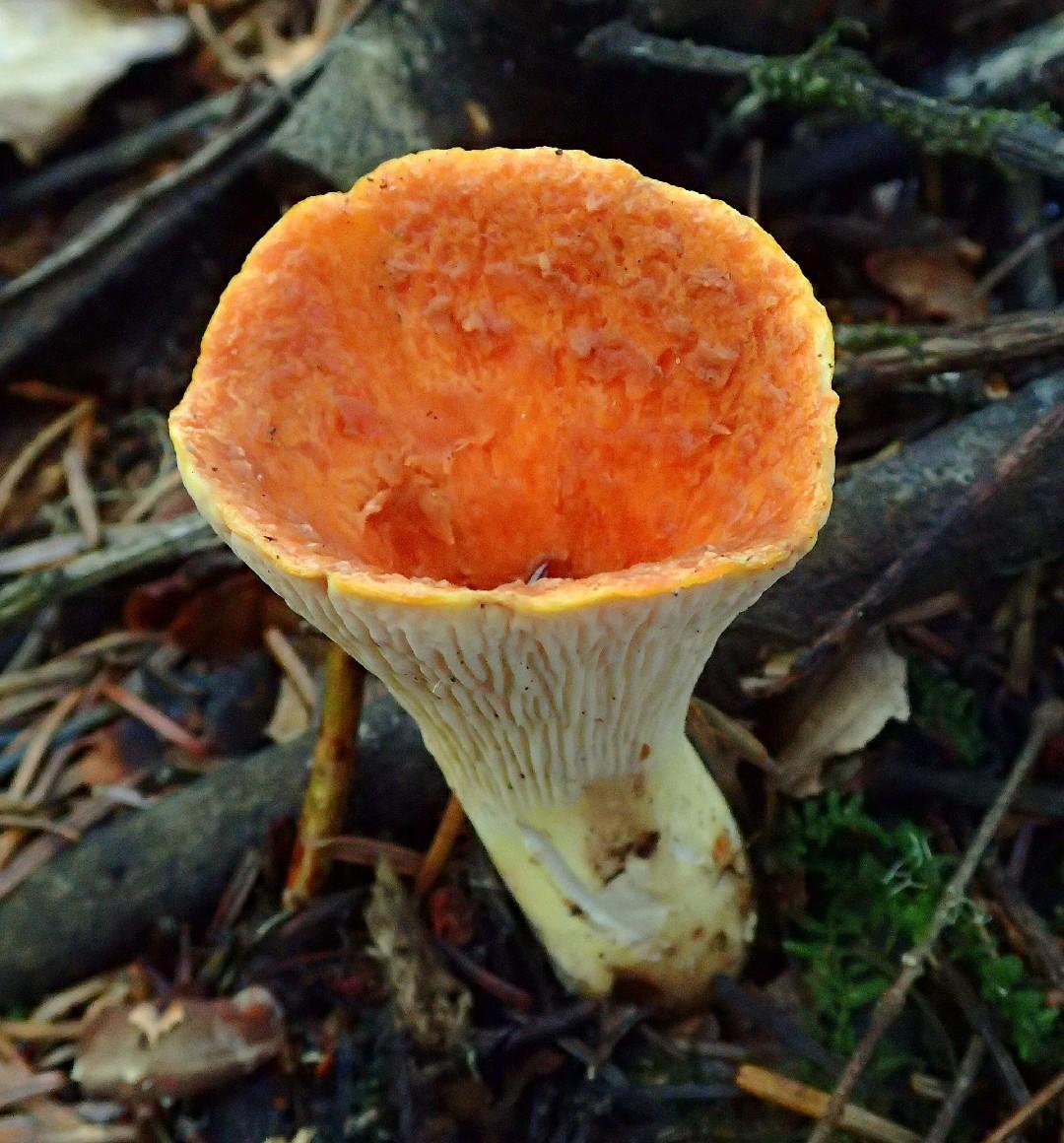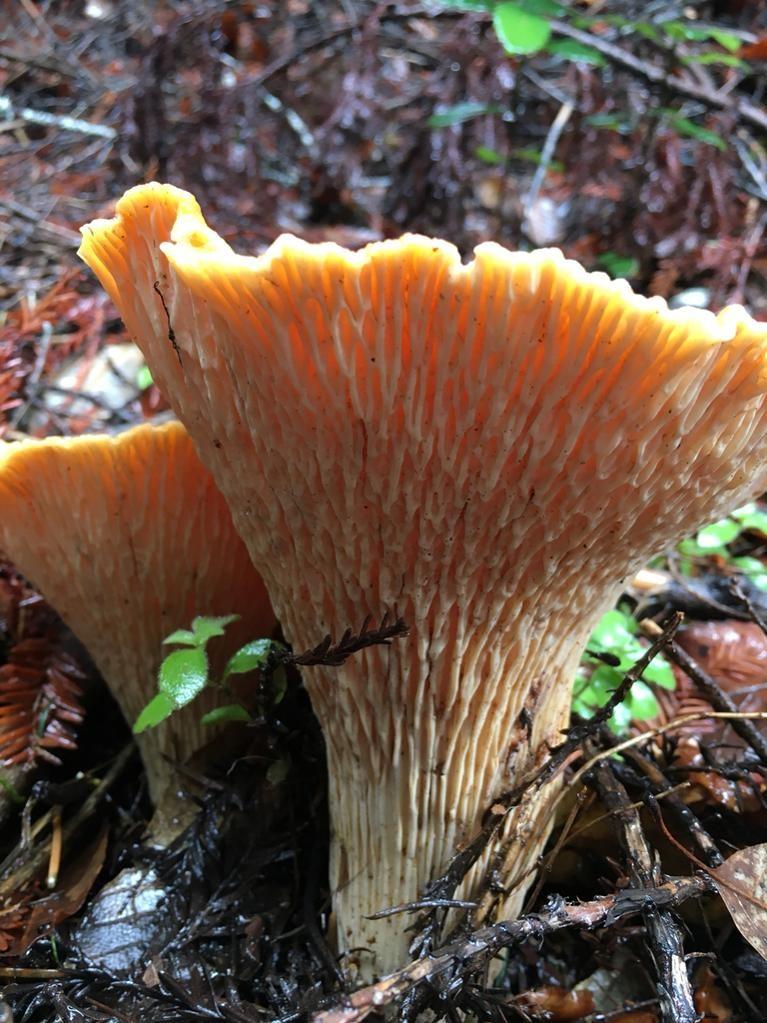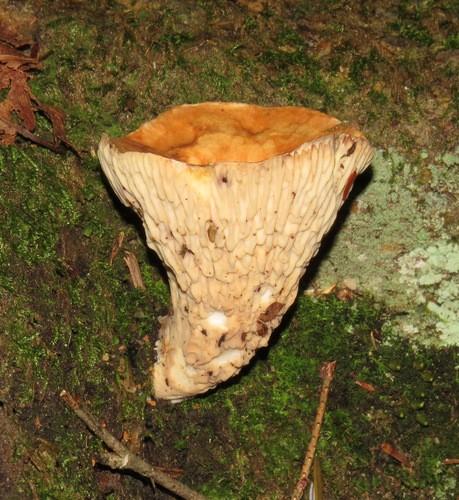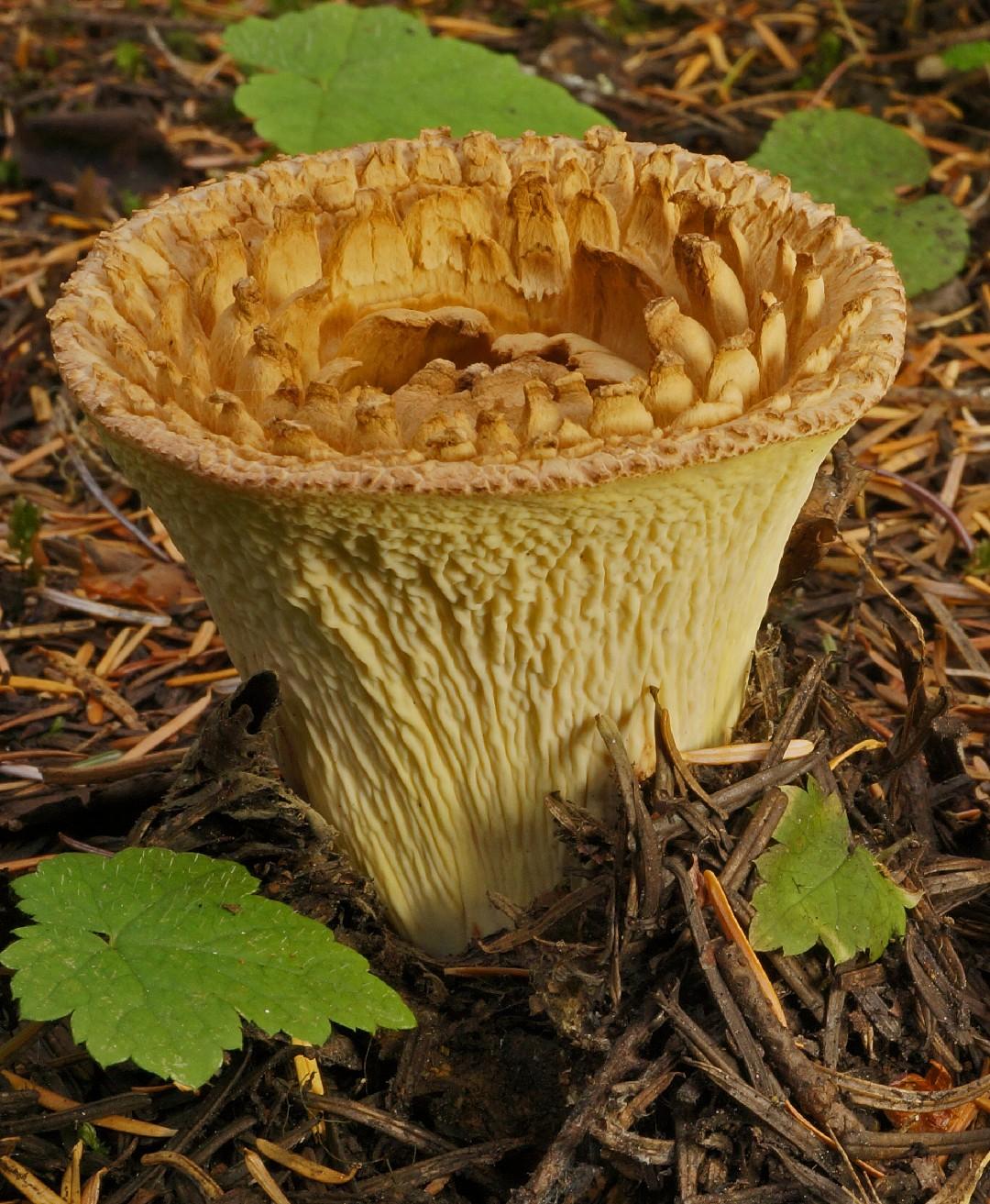



Woolly chanterelle
Turbinellus floccosus
A species of Turbinellus. Also known as Woolly false chanterelle, Scaly vase.
The shaggy chanterelle, bearing only a slight resemblance to its well-known, palatable chanterelle relatives, is characterized by its vase-like form and prominent, light-colored folds and creases on its underside, rather than the gills found on more desirable chanterelles. For some individuals, consuming shaggy chanterelles can lead to gastrointestinal distress, including nausea, emesis, and loose stools, while others experience no adverse effects whatsoever. Consequently, this variety is not classified as a premium culinary mushroom.
Attributes of Woolly chanterelle
Scientific Classification of Woolly chanterelle
Toxicity and Edibility of Woolly chanterelle
Is Woolly chanterelle Toxic?
The woolly chanterelle is recognized as a mushroom with slight toxicity. While commonly sold in markets in Mexico and India, some experts propose that the subspecies found there are distinct from those in North America's Pacific Northwest. The North American variety is known to induce digestive issues.
Is Woolly chanterelle Toxic to Dogs?
Woolly chanterelle can be dangerous to dogs. If your pet has consumed this mushroom, seek immediate veterinary attention. Symptoms may vary, but early intervention is crucial for the best outcome.
